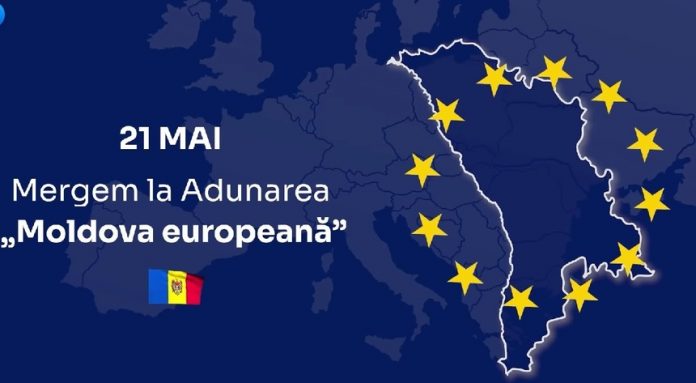Moldova is being touted as being Europe’s first real green country with the aid of private investment and foreign assistance.
For many, Moldova, a former Soviet republic of over 2.5 million people as, is the last place many would think could be at the forefront of a green revolution, Time writes in an op-ed by Suriya Jayanti.
International Energy Agency says it’s one of the least energy self-sufficient countries in the world. It’s entirely dependent on energy imports—99% of its oil and 100% of its natural gas is imported.
It has a single power plant, which is located in the Russian-backed separatist region of Transnistria.
Moldova’s gas sector is also almost entirely controlled by Moldovagaz, which is 51% owned by Russia’s gas giant Gazprom. This arrangement has allowed Moscow decades of control. Gazprom claims $800 million is owed by Chişinău via Moldovagaz, although President Maia Sandu announced on Sept. 3 that a Moldovan government audit found no legitimate debts.
Further, even though Moldova isn’t importing any Russian gas directly now, the country is stuck with gas contracts, agreed to by Moldovagaz, that could prove extremely costly to escape.
One signed in October 2021 commits Chişinău to five more years of Gazprom. Pro-Russian actors in either the Moldovan government that fell in February 2023, or possibly within Moldovagaz, deleted the files Chişinău needs to break the contract.
However these bleak circumstances might prove to be an advantage in the green transition. Countries like Germany and Poland have to dismantle massive energy systems dependent on mostly gas and coal– Moldova is in the position of being able to almost start from scratch.
Indeed, Moldova barely registers on energy demand. Its overall consumption per capita is approximately half the European average at 1.5 tonnes of oil equivalent, 3 billion cubic meters (bcm) of natural gas, and just 2,000 KWh of power annually.
Replacing this with renewable or other clean sources is therefore a relatively small task, made easier by the fact that Moldova’s electricity grid and natural gas infrastructure is already connected to its neighbors.
A single 300 MW solar or wind farm, for example, could alone decarbonize the power for 300,000 homes. All the country needs to do is attract a few investors into the energy sector and the job will be half done already.
In 2022, over $1 billion was pledged to Chişinău, mostly from the U.S. and E.U. The U.S., for example, gave over $100 million in 2022, of which $40.5 million was energy-related funding and another $30 million was budget support “to help ameliorate the energy crisis.”
The assistance has continued to pour in this year. In February, the U.S. announced an additional $300 million in energy support for Moldova. International finance institutions like the World Bank and European Bank for Reconstruction and Development are likewise assisting Moldova.
Chişinău is exploring building a new energy sector reliant on renewables instead of foreign fossil fuels. In late 2022, Western-backed Moldovan President Maia Sandu pitched the EU on a plan to make the country carbon neutral by 2035.
To do this, Moldova will need an estimated investment of $1 billion per year. That is, of course, what it is now getting, albeit with the restrictions that come with foreign aid.
President Sandu and her new government have been taking some concrete steps to begin to find a strategy to escape Gazprom. In June, Chişinău brought on as a key advisor Ukraine’s Andriy Kobolyev, who as the head of Ukraine’s gas monopoly, managed to free Ukraine of Russian natural gas dependenc. His team also bested Gazprom in court amid a legal dispute concerning gas contracts to the tune of $2.9 billion, and got Ukraine paid.
Even so, Chişinău has been hostile to private investment in its energy sector. This will make it very difficult for the country to modernize and attract the more flexible capital of the private sector. The companies that have actually invested in the Moldovan energy sector in the last 20 years have been undermined or driven out.
Spain’s Gas Natural Fenosa, Moldova’s largest supplier and distributor of electricity, suffered over €102.6 million (($110.06 million) in setbacks amid a long running dispute with the government over electricity tariffs.
Experts familiar with the situation believed it was an effort to prevent any profit from accruing to the company by restricting it from charging customers enough to recoup its costs, combined with mismanagement or incompetence or the triumph of vested Kremlin interests.
Rotalin Gas Trading, the largest private gas company in the country and the only private competitor to Moldovagaz, is now in a similar legal dispute over gas tariffs.
In June, Moldova’s energy regulator authorized Moldovagaz to charge higher prices than private investors can charge for the same gas supply services. Few if any renewables investors are likely to enter the Moldovan energy sector until this business climate changes.
But if Chişinău settles the lawsuits by private energy investors, creates an attractive regulatory structure to govern renewables projects, and breaks free of Gazprom, then the resulting wave of investment and the goodwill and foreign assistance from Western governments should be more than enough to help the country transform.
Becoming Europe’s first green country would accelerate Moldova’s bid to join the EU and bypass the fossil fuels that finance the Kremlin.
EU to provide 250 million euros to Moldova for winter energy crisis















